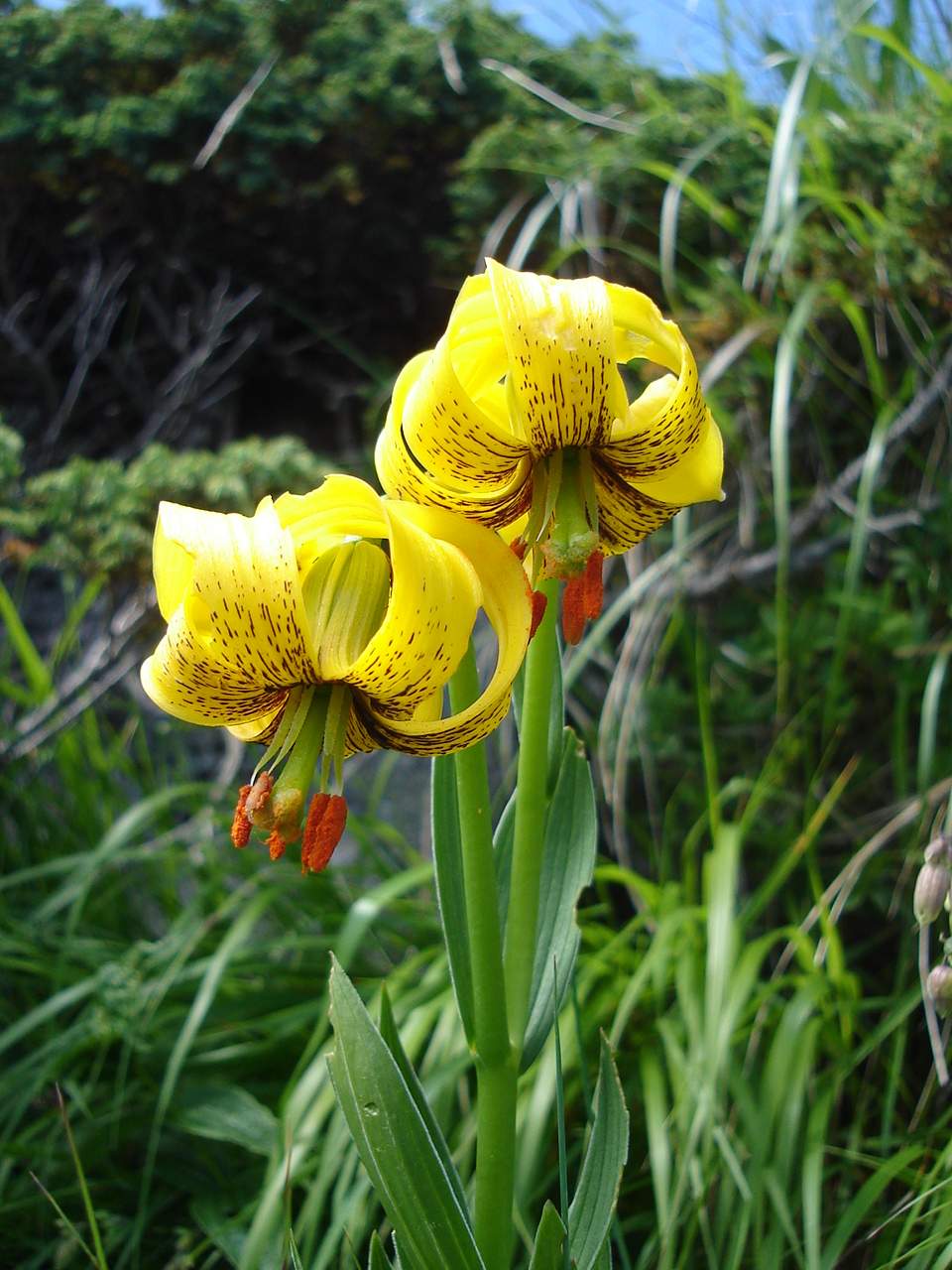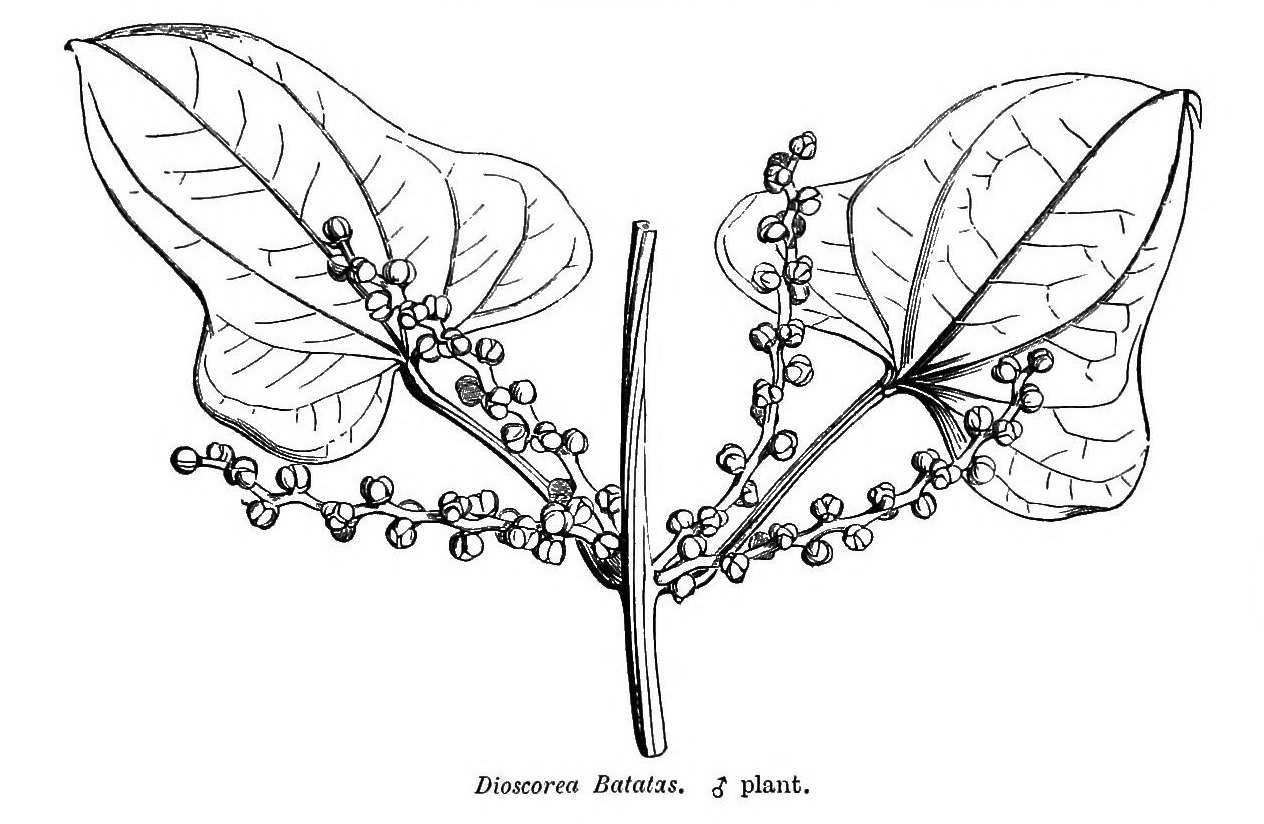|
Liliidae
Liliidae is a botanical name at the rank of subclass. Circumscription of the subclass will vary with the taxonomic system being used (there are many such systems); the only requirement being that it includes the family Liliaceae. Liliidae in Takhtajan system The Takhtajan system treats this as one of six subclasses within class Liliopsida (= monocotyledons). This subclass consists of: * subclass Liliidae *: superorder Lilianae *:: order Melanthiales *:: order Colchicales *:: order Trilliales *:: order Liliales *:: order Alstroemeriales *:: order Iridales *:: order Tecophilaeales *:: order Burmanniales *:: order Hypoxidales *:: order Orchidales *:: order Amaryllidales *:: order Asparagales *:: order Xanthorrhoeales *:: order Hanguanales *: superorder Dioscoreanae *:: order Stemonales *:: order Smilacales *:: order Dioscoreales *:: order Taccales Liliidae in Cronquist system The Cronquist system treats this as one of five subclasses within class Liliopsida (= monoc ... [...More Info...] [...Related Items...] OR: [Wikipedia] [Google] [Baidu] |
Liliopsida
Liliopsida Batsch (synonym: Liliatae) is a botanical name for the class containing the family Liliaceae (or Lily Family). It is considered synonymous (or nearly synonymous) with the name monocotyledon. Publication of the name is credited to Scopoli (in 1760): see author citation (botany). This name is formed by replacing the termination ''-aceae'' in the name Liliaceae by the termination ''-opsida'' (Art 16 of the ICBN). Although in principle it is true that circumscription of this class will vary with the taxonomic system being used, in practice this name is very strongly linked to the Cronquist system, and the allied Takhtajan system. These two are the only major systems to use the name, and in both these systems it refers to the group more widely known as the monocotyledons. Earlier systems referred to this group by the name Monocotyledones, with Monocotyledoneae an earlier spelling (these names may be used in any rank). Systems such as the Dahlgren and Thorne systems (more ... [...More Info...] [...Related Items...] OR: [Wikipedia] [Google] [Baidu] |
Lilianae
Lilianae (also known as Liliiflorae) is a botanical name for a superorder (that is, a rank higher than that of order) of flowering plants. Such a superorder of necessity includes the type family Liliaceae (and usually the type order Liliales). Terminations at the rank of superorder are not standardized by the International Code of Nomenclature for algae, fungi, and plants (ICN), although the suffix ''-anae'' has been proposed. Lilianae, introduced in 1966 as a name for a superorder, progressively replaced the older term Liliiflorae, introduced in 1825 as a name for an order. Taxonomy History Early history - Liliiflorae Liliiflorae was a term introduced by Carl Adolph Agardh in 1825 as a higher order to include the Liliaceae (which he called Coronariae) and related families. Argadh, together with De Candolle developed the concept of ordered botanical ranks, in this case grouping together De Jussieu's (1789) recently defined collections of genera (families) into higher ... [...More Info...] [...Related Items...] OR: [Wikipedia] [Google] [Baidu] |
Liliales
Liliales is an order of monocotyledonous flowering plants in the Angiosperm Phylogeny Group and Angiosperm Phylogeny Web system, within the lilioid monocots. This order of necessity includes the family Liliaceae. The APG III system (2009) places this order in the monocot clade. In APG III, the family Luzuriagaceae is combined with the family Alstroemeriaceae and the family Petermanniaceae is recognized. Both the order Lililiales and the family Liliaceae have had a widely disputed history, with the circumscription varying greatly from one taxonomist to another. Previous members of this order, which at one stage included most monocots with conspicuous tepals and lacking starch in the endosperm are now distributed over three orders, Liliales, Dioscoreales and Asparagales, using predominantly molecular phylogenetics. The newly delimited Liliales is monophyletic, with ten families. Well known plants from the order include '' Lilium'' (lily), tulip, the North American wildflower ... [...More Info...] [...Related Items...] OR: [Wikipedia] [Google] [Baidu] |
Monocotyledons
Monocotyledons (), commonly referred to as monocots, ( Lilianae '' sensu'' Chase & Reveal) are grass and grass-like flowering plants (angiosperms), the seeds of which typically contain only one embryonic leaf, or cotyledon. They constitute one of the major groups into which the flowering plants have traditionally been divided; the rest of the flowering plants have two cotyledons and are classified as dicotyledons, or dicots. Monocotyledons have almost always been recognized as a group, but with various taxonomic ranks and under several different names. The APG III system of 2009 recognises a clade called "monocots" but does not assign it to a taxonomic rank. The monocotyledons include about 60,000 species, about a quarter of all angiosperms. The largest family in this group (and in the flowering plants as a whole) by number of species are the orchids (family Orchidaceae), with more than 20,000 species. About half as many species belong to the true grasses (Poaceae), which are eco ... [...More Info...] [...Related Items...] OR: [Wikipedia] [Google] [Baidu] |
Takhtajan System
A system of plant taxonomy, the Takhtajan system of plant classification was published by Armen Takhtajan, in several versions from the 1950s onwards. It is usually compared to the Cronquist system. It admits paraphyletic groups. Systems The first classification was published in Russian in 1954,and came to the attention of the rest of the world after publication of an English translation in 1958 as ''Origin of Angiospermous Plants''. Further versions appeared in 1959 (''Die Evolution der Angiospermen'') and 1966 (''Sistema i filogeniia tsvetkovykh rastenii''). The latter popularised Takhtajan's system when it appeared in English in 1969 (Flowering plants: Origin and dispersal). A further revision appeared in 1980. 1966 system * Magnoliophyta (Angiospermae) p. 51 ** Class: Magnoliatae ( Dicotyledones) p. 51 ** Class: Liliatae ( Monocotyledones) p. 461 *** Subclass A: Alismidae p. 461 *** Subclass B: Liliidae p. 473 (was ''nom. nov.'') **** Supero ... [...More Info...] [...Related Items...] OR: [Wikipedia] [Google] [Baidu] |
Smilacales
Smilacaceae, the greenbriers, is a family of flowering plants. While they were often assigned to a more broadly defined family Liliaceae, most recent botanists have accepted the two as distinct families, diverging around 55 million years ago during the Early Paleogene. One characteristic that distinguishes Smilacaceae from most of the other members of the Liliaceae-like Liliales is that it has true vessels in its conducting tissue. Another is that the veins of the leaves, between major veins, are reticulate (net-shaped), rather than parallel as in most monocots. Taxonomy The APG II system, of 2003 (unchanged from the APG system, of 1998), recognizes this family and places it in the order Liliales, in the clade monocots. Earlier it was a family of two genera, ''Heterosmilax'' and ''Smilax'', but DNA studies have shown that ''Heterosmilax'' has arisen from ''Smilax'' and the two genera are now merged. This results in Smilax being the only genus in Smilacaceae with about 210 k ... [...More Info...] [...Related Items...] OR: [Wikipedia] [Google] [Baidu] |
Cronquist System
The Cronquist system is a taxonomic classification system of flowering plants. It was developed by Arthur Cronquist in a series of monographs and texts, including ''The Evolution and Classification of Flowering Plants'' (1968; 2nd edition, 1988) and ''An Integrated System of Classification of Flowering Plants'' (1981) (''see'' Bibliography). Cronquist's system places flowering plants into two broad classes, Magnoliopsida ( dicotyledons) and Liliopsida (monocotyledons). Within these classes, related orders are grouped into subclasses. While the scheme was widely used, in either the original form or in adapted versions, many botanists now use the Angiosperm Phylogeny Group classification for the orders and families of flowering plants, first developed in 1998. The system as laid out in Cronquist's ''An Integrated System of Classification of Flowering Plants'' (1981) counts 64 orders and 321 families in class Magnoliopsida and 19 orders and 65 families in class Liliopsida. ''Th ... [...More Info...] [...Related Items...] OR: [Wikipedia] [Google] [Baidu] |
Dioscoreales
The Dioscoreales are an order of monocotyledonous flowering plants in modern classification systems, such as the Angiosperm Phylogeny Group and the Angiosperm Phylogeny Web. Within the monocots Dioscoreales are grouped in the lilioid monocots where they are in a sister group relationship with the Pandanales. The Dioscoreales must contain the family Dioscoreaceae which includes the yam (''Dioscorea'') which is an important food source in many regions. Older systems tended to place all lilioid monocots with reticulate veined leaves (such as Smilacaceae and Stemonaceae together with Dioscoraceae) in Dioscoreales. As currently circumscribed by phylogenetic analysis using combined morphology and molecular methods, Dioscreales contains many reticulate veined vines in Dioscoraceae, it also includes the myco-heterotrophic Burmanniaceae and the autotrophic Nartheciaceae. The order consists of three families, 22 genera and about 850 species. Description Dioscoreales are vines or ... [...More Info...] [...Related Items...] OR: [Wikipedia] [Google] [Baidu] |
Burmanniales
Burmanniales Mart. (Burmanniales Blume, Burmanniales Heintze) was an order of monocotyledons, subsequently discontinued. Description Small perennial or annual mycorrhizal herbs that are achlorophyllous (lacking chlorophyll) and mycotrophic or less often autotrophic. Systematics and taxonomy Carl Friedrich Philipp von Martius listed the ''ordo'' (that is, family) Burmanniaceae in 1835 and consequently has been cited as an authority, although he acknowledged earlier descriptions by Carl Ludwig Blume (1827) and John Lindley (1830). In 1927 Heintze elevated the Burmanniaceae family to the rank of the Burmanniales order. Subsequent authors have followed this, including Lawrence 1951, Hutchinson 1973, Dahlgren 1980) and Thorne 1992. Johri ''et al.'' treat the 17 families of order Liliiflorae as distributed over 5 suborders, including Burmanniineae Engl.. The latter suborder was then considered to contain two families, Burmanniaceae and Corsiaceae. As circumscribed ... [...More Info...] [...Related Items...] OR: [Wikipedia] [Google] [Baidu] |
Botanical Name
A botanical name is a formal scientific name conforming to the ''International Code of Nomenclature for algae, fungi, and plants'' (ICN) and, if it concerns a plant cultigen, the additional cultivar or Group epithets must conform to the ''International Code of Nomenclature for Cultivated Plants'' (ICNCP). The code of nomenclature covers "all organisms traditionally treated as algae, fungi, or plants, whether fossil or non-fossil, including blue-green algae (Cyanobacteria), chytrids, oomycetes, slime moulds and photosynthetic protists with their taxonomically related non-photosynthetic groups (but excluding Microsporidia)." The purpose of a formal name is to have a single name that is accepted and used worldwide for a particular plant or plant group. For example, the botanical name ''Bellis perennis'' denotes a plant species which is native to most of the countries of Europe and the Middle East, where it has accumulated various names in many languages. Later, the plant was introduc ... [...More Info...] [...Related Items...] OR: [Wikipedia] [Google] [Baidu] |






.jpg)